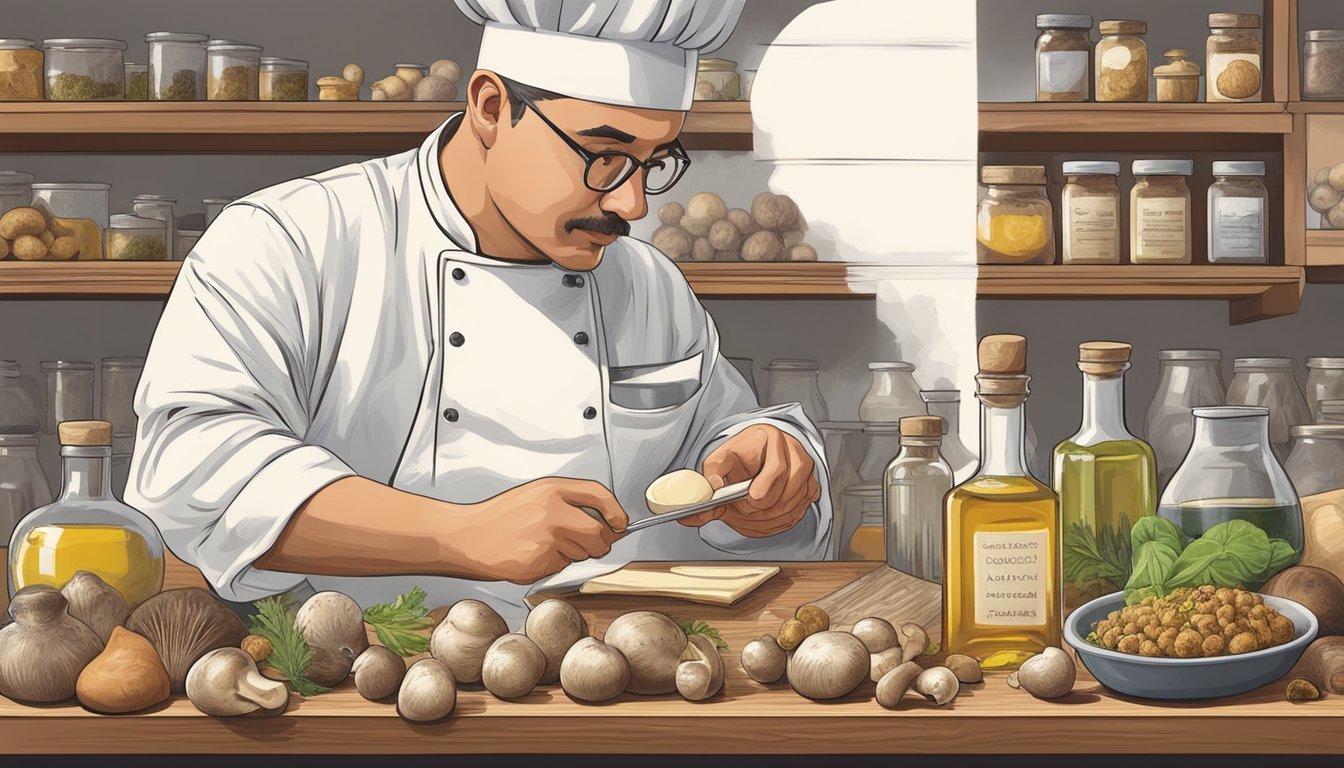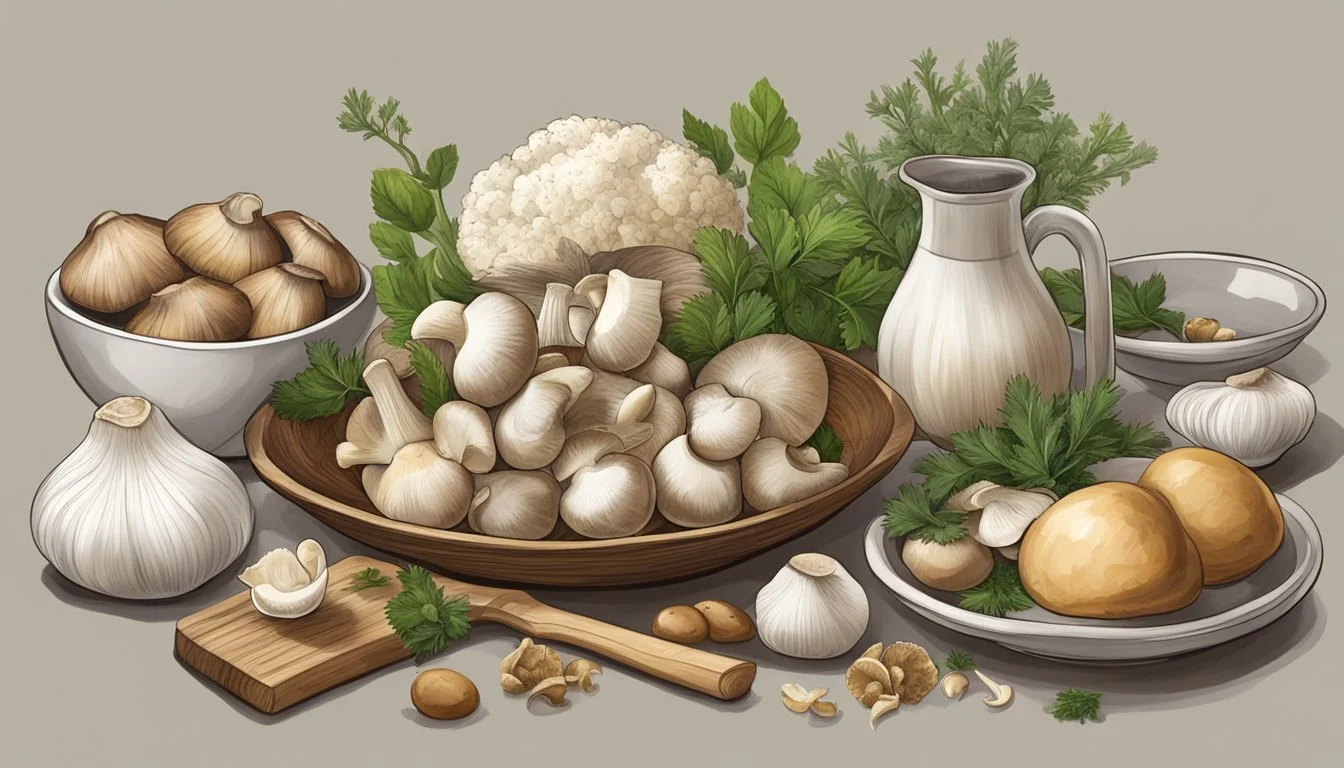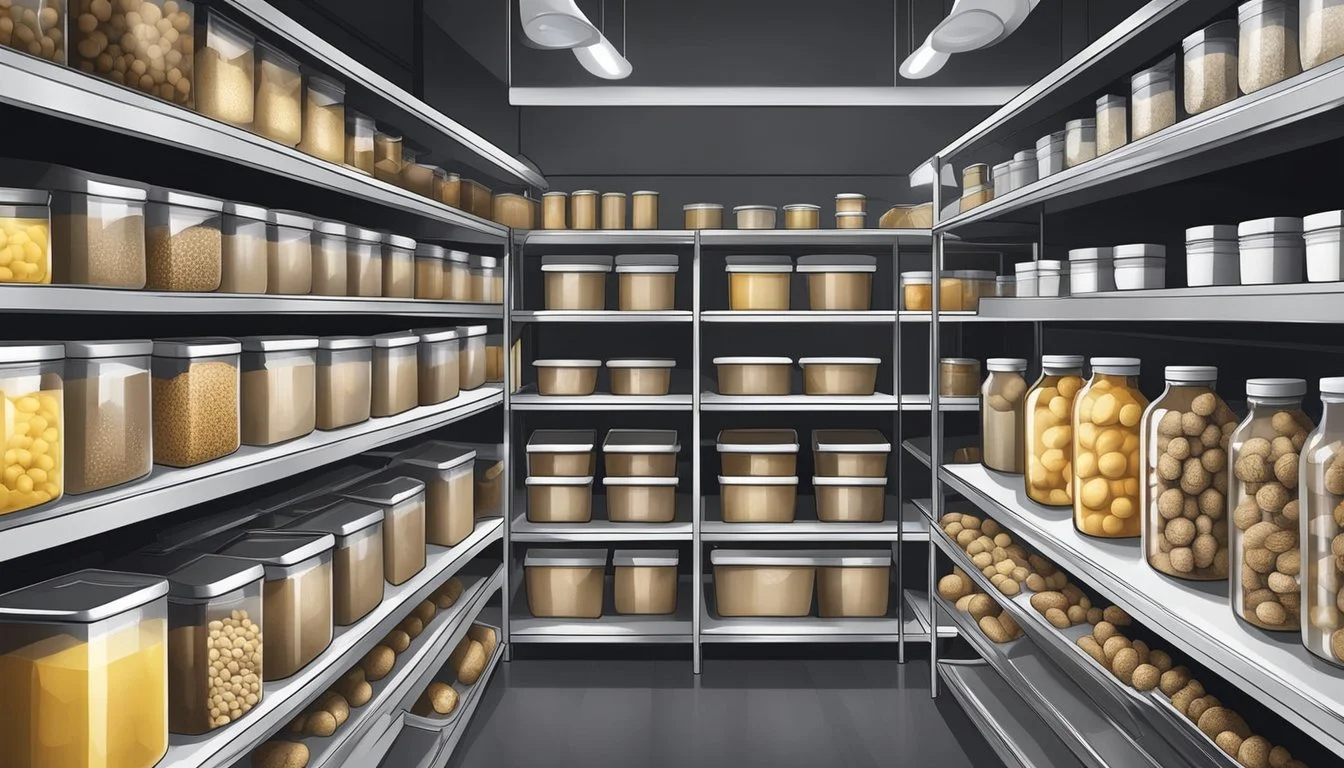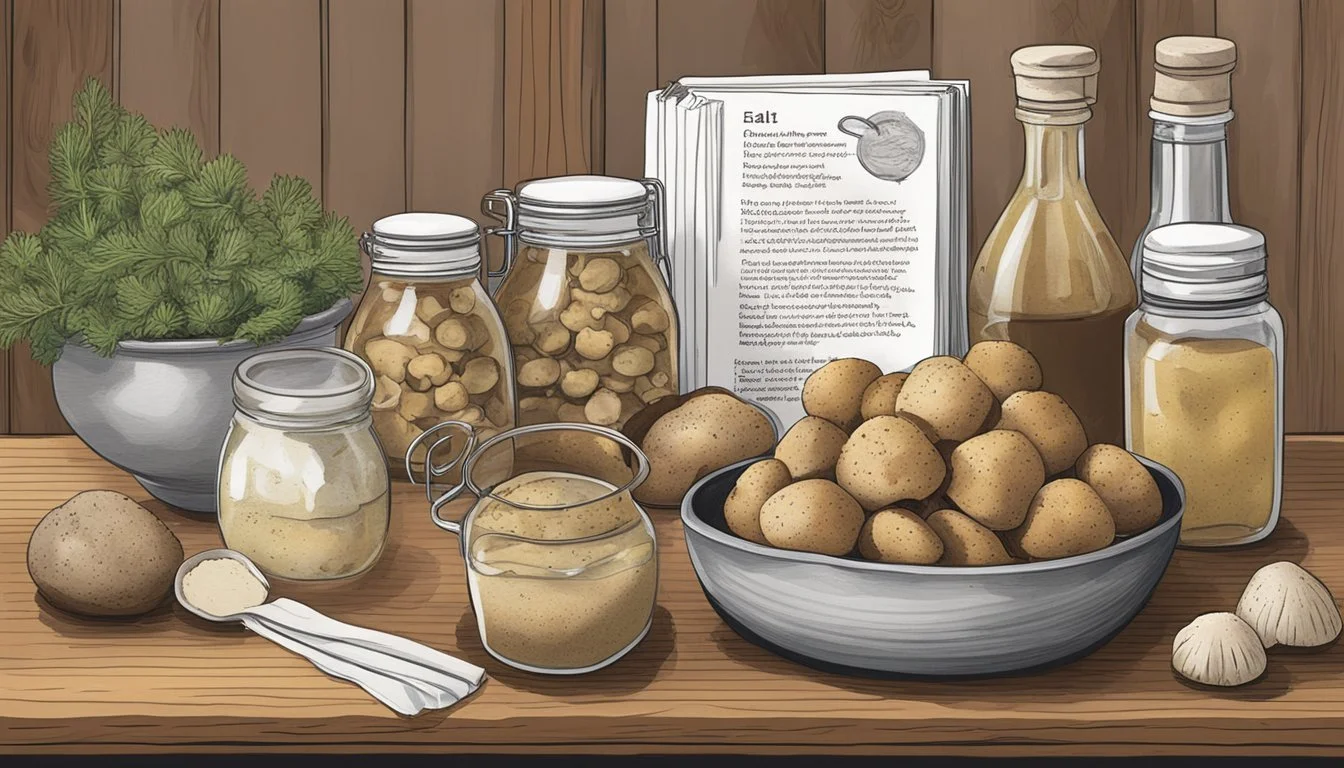White Truffle Substitutes
Top Alternatives for Gourmet Dishes
White truffles are cherished for their aromatic, garlicky notes and complex flavor profile, making them a luxurious addition to any dish. When white truffles are unavailable or too costly, alternatives such as porcini mushrooms and truffle paste can provide a comparable depth of flavor. This post will explore various substitutes, ensuring that you can still achieve a rich, umami taste without breaking the bank.
Black trumpet mushrooms present another cost-effective alternative. These mushrooms can be incorporated into various recipes to deliver that sought-after truffle-like earthiness. Additionally, truffle oil, though a synthetic option, can be used to finish dishes and enhance the truffle experience.
For those looking to substitute truffles in pasta dishes, risottos, or sauces, truffle salt and porcini oil are excellent choices. Their concentrated flavors mimic the essence of white truffles and transform everyday meals into gourmet delights.
Understanding Truffles
Truffles are renowned for their luxurious aroma and distinct flavors. They come in different varieties, each with its own specific characteristics, harvesting methods, and seasonality.
Aroma and Flavor Profile
Truffles are celebrated for their unique aroma and complex flavor. The scent can be described as both musky and earthy, with an intense umami profile. While white truffles have a more delicate aroma with garlicky undertones, black truffles exude a deeper, earthier scent.
These fungi are known for adding richness to various dishes. The flavor can include hints of nuts, garlic, and even a slight peppery note. This combination makes truffles a sought-after delicacy in the culinary world.
White vs Black Truffle Characteristics
White truffles, primarily found in Italy and France, are lighter in color and possess a more delicate flavor. They are often eaten raw and shaved over dishes to maintain their aromatic qualities.
Black truffles, on the other hand, are darker and have a more robust, earthy flavor. They can withstand higher cooking temperatures, making them versatile for different culinary techniques.
To summarize the key differences:
Attribute White Truffle Black Truffle Color Light (often cream or beige) Dark (brown to black) Aroma Delicate with garlicky notes Musky and intensely earthy Usage Often used raw Can be cooked or used raw Origin Mainly Italy and France Also found in Italy and France
Harvesting and Seasonality
Truffle harvesting is a meticulous process requiring trained animals, usually dogs, to sniff out these underground fungi. White truffles are typically harvested from September to December. This short season adds to their exclusivity and high price.
Black truffles have a slightly longer season, generally from November to March, allowing for a more extended availability in markets. The harvesting regions in Italy and France play a significant role in their quality.
Because truffles grow underground in symbiosis with tree roots, knowledge of the land and experience are crucial for successful foraging. This meticulous harvesting process underscores the truffle's status as a prized culinary ingredient.
Culinary Uses of Truffles
Truffles are prized for their unique, earthy flavor and aroma. There are various ways to incorporate truffles into dishes, add a finishing touch with truffle oil, or make rich truffle butter.
Incorporating Truffles in Cooking
Truffles can elevate the flavor profile of numerous dishes. Chefs frequently shave white truffles over pasta and risotto for an exquisite touch. Thinly sliced truffles can also be folded into omelets or placed on top of scrambled eggs to impart their distinct umami.
In salads, truffle shavings add an unexpected depth. Pizza and sandwiches gain complexity when adorned with truffles, and they also work well mixed into mashed potatoes for a gourmet twist.
Finishing Touches with Truffle Oil
Truffle oil serves as an excellent way to infuse the distinct flavor of truffles into various dishes. Typically used as a finishing touch, truffle oil can enhance salads, pasta, and risotto. Drizzling truffle oil over warm pizzas right before serving adds a luxurious aroma.
Truffle salt can accompany the oil to accentuate the truffle flavor further. Mashed potatoes benefit from a light coating of truffle oil, making them more flavorful. Even simple dishes like toast can achieve culinary excellence with a touch of truffle oil.
Making Truffle Butter
Truffle butter combines butter with finely chopped truffles, creating a rich spread that can be used in various dishes. It's perfect for melting over freshly cooked pasta or risotto, providing an elevated flavor. Spread truffle butter on toast or use it to make gourmet sandwiches.
In mashed potatoes, the addition of truffle butter offers an opulent twist. A small amount can also enhance the flavors of steak or grilled vegetables, creating a luxurious dining experience. Truffle butter is a versatile ingredient that blends the richness of butter with the savory notes of truffles.
Selecting Truffle Substitutes
Choosing a substitute for white truffle involves considering flavor, availability, and the culinary role. Alternatives such as porcini mushrooms, truffle oil, and black trumpet mushrooms each have unique properties that can replicate the essential characteristics of truffles.
Criteria for Substituting Truffles
When substituting white truffles, the key factors to consider are flavor profile, texture, and availability. White truffles are known for their garlicky and nutty taste with a slightly earthy aroma. Thus, substitutes need to closely match these taste notes.
Texture also plays a role; truffles have a firm texture that adds a distinct bite to dishes. Availability and cost are practical considerations since truffles are rare and expensive.
Ideal Substitutes:
Porcini mushrooms: Known for their earthy flavor and meaty texture.
Black trumpet mushrooms: Offer a deep, rich taste and are more affordable.
Truffle oil: Provides a truffle-like aroma, though quality can vary.
Button mushrooms with truffle salt: Affordable and accessible, adding truffle-like essence.
Evaluating Alternative Ingredients
Alternatives must be evaluated not just on taste, but also on how well they perform in different recipes. Porcini mushrooms provide a rich, earthy flavor, making them suitable for soups, risottos, and sauces. Their availability is greater than truffles, and they are less costly.
Black trumpet mushrooms mimic the robust taste of truffles and work well in gourmet dishes. They can be sourced from specialty stores and are relatively economical.
Truffle oil is widely available and imparts a strong aroma of truffles when used sparingly. However, it should be added at the end of cooking to preserve its delicate flavor.
Button mushrooms with truffle salt offer a simple way to introduce truffle flavor without the expense. This combination is versatile for pasta, pizzas, and salads.
By focusing on these specific criteria and evaluating alternative ingredients, one can effectively select suitable substitutes for white truffles in various culinary applications.
Top White Truffle Alternatives
White truffle can be replaced with various ingredients that impart similar umami and garlicky notes. This guide explores key substitutes such as mushrooms, oils, and dairy-based options, providing practical details for each.
Porcini Mushroom Substitutes
Porcini mushrooms are highly regarded for their rich, earthy flavor, making them an excellent substitute for white truffles. Fresh or dried porcini mushrooms offer a deep umami taste that mimics the profile of white truffles. Dried porcini, in particular, have a concentrated flavor, which can be rehydrated and used in sauces, risottos, and pasta dishes.
Cremini and portobello mushrooms can serve as more accessible options, though they lack the intense flavor of porcini. These mushrooms can be purchased relatively cheaply and provide a reasonable truffle-like aroma and taste, especially when combined with aromatic herbs and spices.
Oil-Based Substitutes
Porcini mushroom oil is created by infusing porcini mushrooms with extra virgin olive oil. This oil captures a sharp fungal aroma and umami flavor, similar to white truffle oil. It is ideal for finishing dishes like pasta and risotto. For best results, one should choose oils that mix extra virgin olive oil with genuine mushroom extracts instead of artificial flavoring.
Another good alternative is hazelnut oil, which has a nutty, earthy flavor that complements a variety of dishes. Hemp oil and Worcestershire sauce can be used in smaller quantities to achieve the desired umami effect, although they will impart their distinct tastes.
Cheese and Butter Alternatives
Truffle cheese blends the earthy essence of truffles with the creamy texture of cheese. Varieties like truffle-infused cheddar or brie can add a luxurious touch to dishes that would otherwise call for white truffles. This option works exceptionally well in pasta, warm bread, and as a topping for soups and salads.
For a rich, dairy-based substitute, truffle butter can be used. Made by infusing standard butter with truffle essence, it delivers both the creamy texture and the distinctive truffle aroma. This butter can be used to finish off steaks, mashed potatoes, or even spread on toast for a gourmet touch.
Using Substitutes in Recipes
When cooking with white truffle substitutes, it's important to consider how they enhance dishes and the best alternative seasoning techniques to replicate the unique flavor.
Enhancing Dishes with Substitutes
Porcini mushrooms stand out as a top alternative. Their rich, earthy flavor provides a deep umami character, comparable to white truffles. Porcini can be used fresh or dried. When using dried porcini, incorporate the soaking liquid to enrich sauces, soups, or risottos.
Mushroom oil is an excellent finishing touch. Drizzle it over salads or pasta to add a subtle, truffle-like essence. This can elevate simple dishes significantly without overwhelming them.
Truffle oil mimics the aromatic qualities of white truffles. Use it sparingly to finish savory dishes such as risotto or soups, as too much can overpower the taste. A small amount can achieve the desired depth and complexity.
Alternative Seasoning Techniques
Blending garlic and butter can create a base similar to truffle butter. This mixture works well for spreading on bread or incorporating into pasta dishes and risottos. The richness of butter combined with fresh garlic brings out savory notes that resemble those of white truffles.
Sea salt infused with black truffle is another practical substitution. Sprinkling it lightly over finished dishes, such as salads or roasted vegetables, can impart a delicate truffle flavor. It's a simple yet effective way to season food without altering the core ingredients.
For a more pronounced flavor, black trumpet mushrooms provide subtler truffle-like nuances. Their potent taste can enhance soups and sauces, offering a versatile option for various recipes.
Incorporating these techniques and substitutes helps maintain the essence of white truffles in cooking, ensuring dishes are both flavorful and accessible.
Preservation and Storage
Proper storage techniques ensure truffle substitutes maintain their flavor and quality. Techniques vary based on the type of substitute, such as dried mushrooms or flavored oils.
Extending Freshness of Substitutes
Preserving fresh substitutes like cremini or porcini mushrooms requires specific methods. Refrigeration is key; keep mushrooms in a paper bag to allow air circulation. Avoid plastic as it traps moisture, leading to mold. Replace paper towels frequently to keep the environment dry.
Freezing is suitable for mushrooms with high water content. Chop and sauté before freezing to preserve texture and flavor. Store in airtight containers or heavy-duty freezer bags, removing as much air as possible. Properly stored, these can last up to six months while maintaining their quality.
Storing Oil and Salt Substitutes
Truffle oils and salts are popular substitutes that mimic truffle aroma and flavor. For truffle oil, use dark-colored bottles to prevent light from degrading the oil. Store in a cool, dark place. Refrigeration extends shelf life but may cause the oil to solidify. Just bring it to room temperature before use.
Truffle salt should be kept in airtight containers to prevent moisture absorption. Place containers in a cool, dry place, away from direct sunlight. Salt does not spoil but maintaining its quality ensures consistent flavor. Proper storage maximizes the shelf life of these seasonally used ingredients.
Where to Find Substitutes
Finding alternatives for white truffles involves exploring both local and online options. Availability can vary depending on the region, season, and cost, but both physical stores and digital marketplaces offer viable solutions for those seeking truffle substitutes.
Retail Options for Truffle Alternatives
Grocery stores often carry a range of substitutes like Porcini Mushrooms, which can mimic the rich, earthy flavor of white truffles. Check both the fresh produce section and the dried goods aisle. Morels and Black Trumpet Mushrooms may also be available, depending on the season.
For seasoning, stores might stock truffle salt—a blend of sea salt and grated truffles. This option is quite versatile and can be used in various dishes from soups to salads.
Specialty food markets may offer an even more extensive selection. These markets are ideal for finding lesser-known substitutes and may also carry gourmet products like Porcini Oil or Truffle Paste, which can add a concentrated burst of truffle-like flavor to your recipes.
Online Sources for Truffle Substitutes
Online retailers provide a broader range of truffle alternatives, often with detailed descriptions and customer reviews to guide you. Websites like Amazon or specialty food websites offer dried porcini mushrooms, truffle salt, and truffle oil.
With online shopping, it's easier to compare prices and read reviews, ensuring you get a quality product. International retailers might also offer unique products that are not locally available.
Additionally, some online specialty food stores may offer seasonal promotions or bulk purchasing options, which can be cost-effective. Ensure to check delivery times and shipping costs, as these can affect the final price of the product. Whether you're looking for truffle-infused sea salt or gourmet mushroom varieties, the internet broadens your search, making it easier to find precisely what you need.








